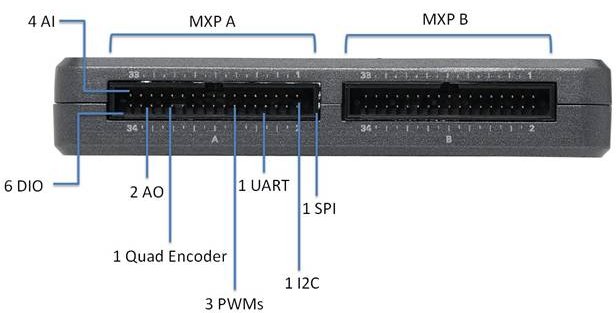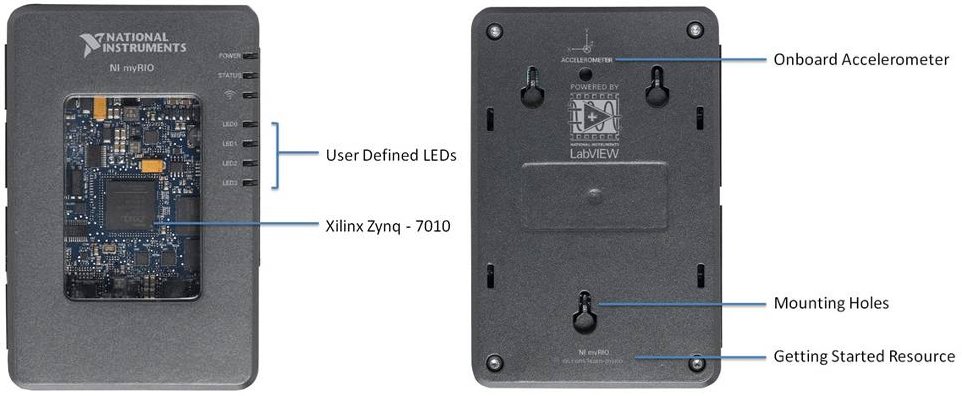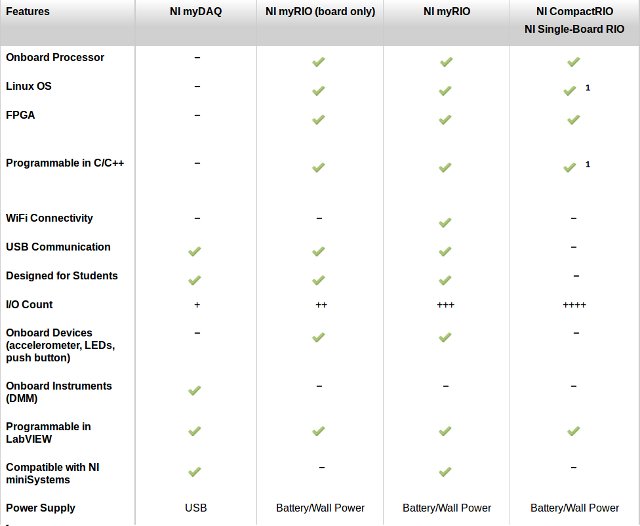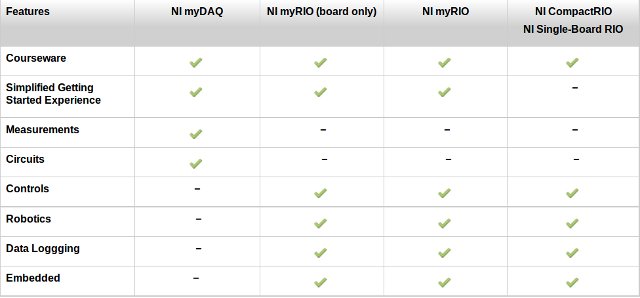National Instruments has been working on a device called NI myRIO, an hardware & software platform that aims at giving engineering students the ability to design real systems quickly for automation, robotics, data logging or embedded systems. The hardware is based on Xilinx Zynq-7010 with a dual-core ARM Cortex-A9 processor and an FPGA with 28,000 programmable logic cells, and features 10 analog inputs, 6 analog outputs, audio I/O channels, and up to 40 lines of digital input/output (DIO).
NI myRIO Hardware Specifications:
- SoC – Xilinx Zynq-7010 with a dual core Cortex A9 processor and FPGA with 28,000 cells
- System Memory – Unknown
- Storage – Unknown
- Expansion Ports:
- myRIO exPansion Ports (MXP) – Two identical ports (MXP A and MXP B) with 4 analog inputs, 6 digital inputs/outputs, 2 analog outputs, 1 quad encoder, 3 PWMs, 1 UART, 1 I2C and 1 SPI by default. Ports configuration is customizable with Labview FPGA.
- miniSystems Port (MSP) – Power, 2 analog outputs, 4 analog inputs, and 8 digital inputs/outputs by default. Ports configuration is customizable with Labview FPGA.
- Connectivity – Wi-Fi
- USB – 1x USB host port, 1x USB device port for connection to PC
- Audio – Audio In, Audio Out
- Misc – User and reset buttons, power, status and Wi-Fi LEDs, 4 user-defined LEDs, on-board accelerometer.
- Power – 6-16V input, or battery.

The device runs Linux, and is programmable with C/C++, or Labview. It will also possible to purchase the board only without enclosure, but you’ll lose Wi-Fi connectivity, a few IO pints, and compatibility with NI miniSystems. The tables below show the difference between myRIO products with regards to hardware/software:
and education resources and uses:
Although exact pricing has not been disclosed, the company mentioned myDAQ and myRIO board will be the cheapest options, followed by NI MyRIO, and CompactRIO / SingleBoard RIO should be much more expensive. All 4 products above can get educational discounts.
Beside the hardware and software, NI also provides courseware for their devices. One interesting example is NI myRIO Project Essentials Guide (PDF) that shows how to use myRIO with LEDs, motor, relays, photo-interrupters and lots of other components. Video tutorials are also available on YouTube (Listed of the end of the PDF file) for:
- Component Principles of Operation and Interfacing Techniques
- LabVIEW Techniques for myRIO
- LabVIEW Demo Project Walk-Throughs (See Motor control demo video below as an example).
NI Myrio is not available yet, but “will be soon”. You can find more information, and buy the kit once it becomes available, on NI MyRIO page.
Thanks to Miklos for the tip.

Jean-Luc started CNX Software in 2010 as a part-time endeavor, before quitting his job as a software engineering manager, and starting to write daily news, and reviews full time later in 2011.
Support CNX Software! Donate via cryptocurrencies, become a Patron on Patreon, or purchase goods on Amazon or Aliexpress







